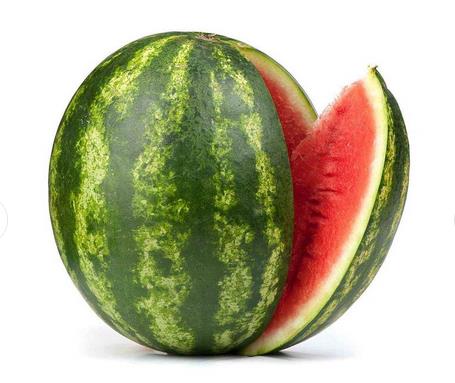Watermelon in Kenya is one of the short term farming projects that one can invest in for a quick return. You can only wait for less or about three months and your investment starts paying off. And the good thing is that the market for watermelons is ever ready.
Best Places for Growing Watermelon in Kenya
Kenya has a favourable climate for growing watermelons, with temperatures ranging from 20 to 30 degrees celsius and an annual rainfall of between 600mm and 1,200mm. These conditions are ideal for the growth of watermelon, which requires a lot of sunlight and water. The areas in Kenya that experience hot climate such as Baringo, Narok, Kajiado, Machakos and Makueni are the leading producers of watermelon.
Best Soil conditions for Watermelon farming
- Watermelon requires well draining sandy loam soil with a pH between 6.0 and 7.0.
- Adequate soil moisture is also important, as the plant requires consistent moisture throughout the growing season to produce high-quality fruit.
- Additionally, it is a good idea to add a balanced, slow-release fertilizer to the soil prior to planting to ensure that the plants have the necessary nutrients to grow and produce fruit.
- Ample sun exposure is also crucial for watermelon growth, as the plants need at least 8 hours of direct sunlight per day to produce sweet juicy fruit.
Watermelon farming in Kenya is done mainly by small scale farmers, who grow the crop on small plots of land. The crop is planted in raised beds to ensure good drainage and to prevent waterlogging. Watermelons are often grown together with other crops, such as maize and beans, which helps to optimize the use of land and increase yields.

How to Plant Watermelon
Watermelon is a warm weather crop that is best planted during the warm weather periods. To plant watermelon, prepare a sunny location in your farm with well-drained soil. Rows should be spaced 3 to 6 feet apart, with individual plants spaced 3 to 4 feet apart within the rows.
Steps:
1. Dig holes for the plants that are about twice as wide and just as deep as the root ball.
2. Add a few inches of compost or well-rotted manure to the bottom of each hole.
3. Place a seedling in each hole and backfill the soil, tamping it down gently around the roots.
4. Water the seedlings thoroughly to help them settle into the soil.
5. As plants grow, keep the soil consistently moist but not waterlogged. Watermelons require about 1 inch of water per week, either from rainfall or supplemental irrigation.
6. (This is optional) Provide support for the plants as they grow, such as using a trellis or staking them to prevent the fruit from dragging on the ground.
How to Increase Watermelon Yield
- To improve yield, Farmers in Kenya use a variety of techniques, such as;
- Crop rotation
- Proper soil management
- The use of fertilizers and pesticides.
- Irrigation is also commonly used, especially in areas where rainfall is not enough.
Watermelon Market
Kenya’s watermelon production has increased over the years due to increased demand for the fruit both domestically and internationally. The country exports watermelons to several countries in the region, including Uganda and Tanzania. Additionally, the country’s supermarkets and street vendors also sell large quantities of watermelons, especially during the hotter months when the fruit is in high demand.
Profitability of Watermelon farming in Kenya
- Watermelon farming in Kenya has the potential to be a profitable venture for farmers. The cost of production of watermelon farming in Kenya is relatively low, as the majority of the inputs needed, such as seeds, labour, and land are readily available. The cost of the seeds is around Ksh11, 000 for half a kg which is enough to plant 1 acre.
- Watermelon farming requires adequate irrigation, which can be costly to install, but it can also increase yields and improve the overall quality of the fruits. The cost of labour can vary depending on the size of the farm and the methods used to cultivate the watermelons. The average cost of labour in most parts of Kenya is around Ksh500 per day.
- In terms of returns, watermelon farming in Kenya can yield high returns. The average yield per acre is around 15,000 – 20,000 kg and the average price for a watermelon is around Ksh30/kg. With proper management and optimal weather conditions, a farmer can expect to earn a gross income of around Ksh450, 000 to Ksh600, 000per acre.
- The amount of income earned varies according to the local markets, climates, pests and management practices. Also the prices of watermelon in Kenya can fluctuate with the season. It’s also important to conduct thorough research and due diligence when considering watermelon farming in Kenya.
Challenges Facing Watermelon farming in Kenya
Watermelon Farming in Kenya has faced some challenges such as diseases, pests, and weather-related issues have led to significant losses for farmers. Additionally, small scale farmers often lack access to modern farming techniques, which can limit their yields.
The government has made various efforts to support farmers in order t improve their yields. They have provided training and resources such as improved seed variety, appropriate farming techniques, and mechanization of farming activities. Overall watermelon farming in Kenya plays a crucial role in providing food and income for many small scale farmers, and efforts are on-going to improve yields and ensure a sustainable and profitable industry.